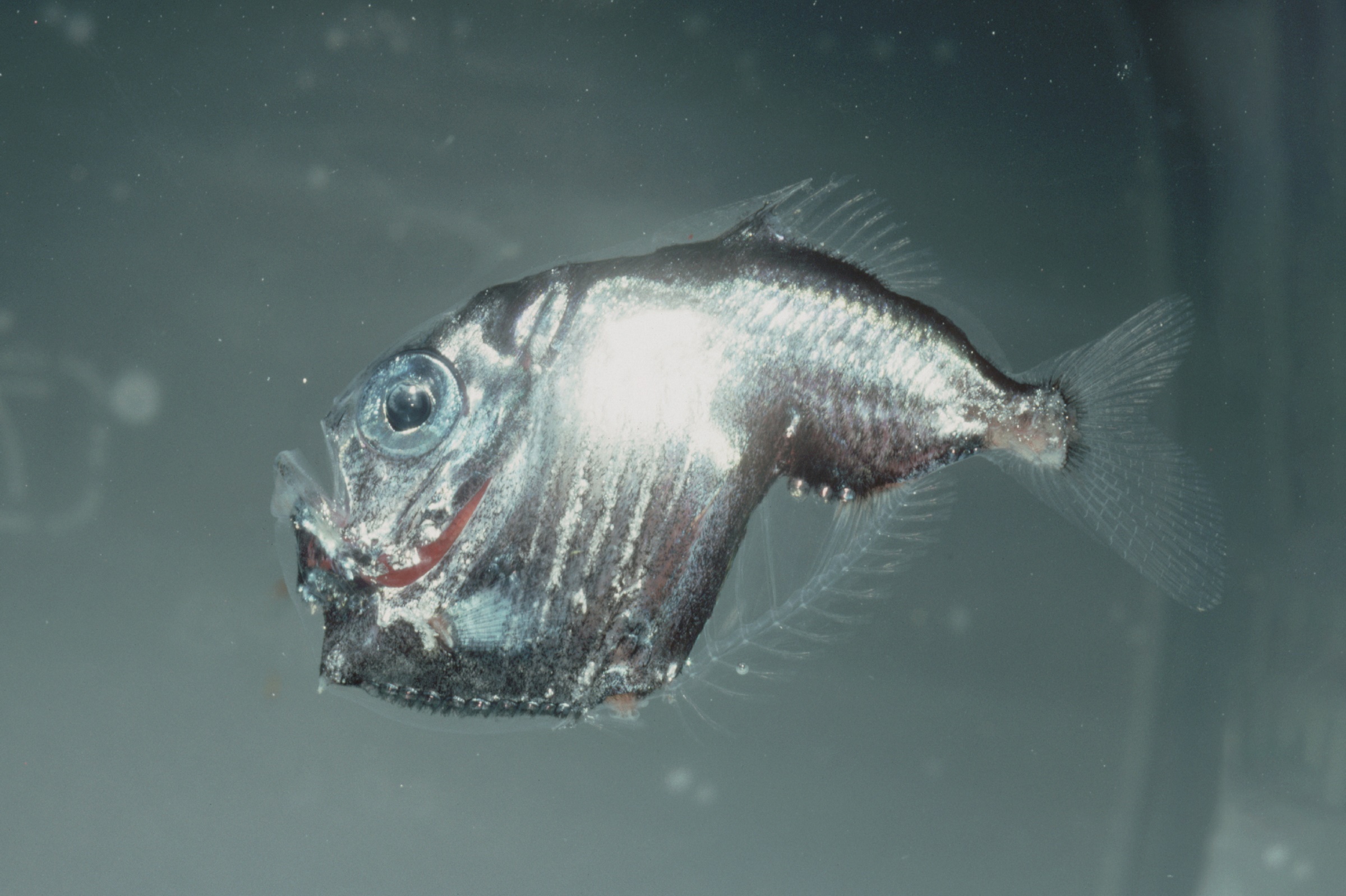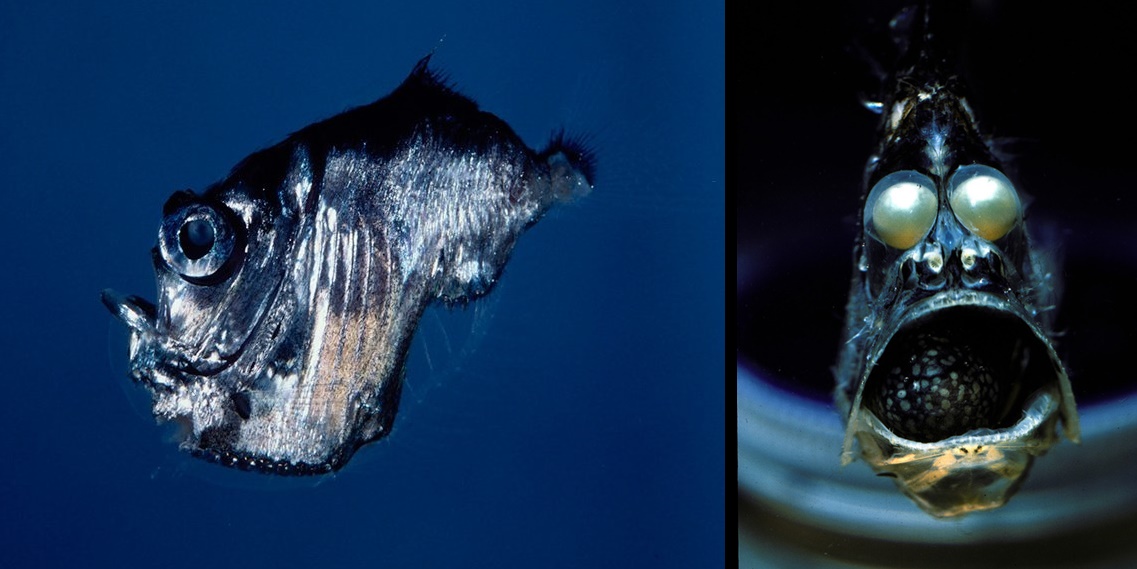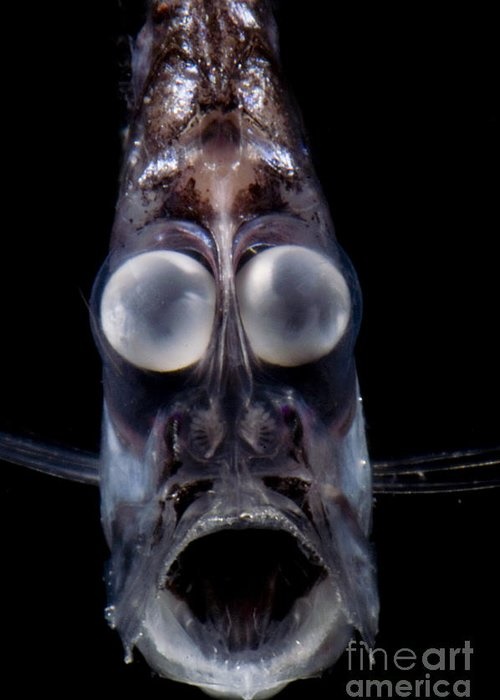Deep Sea Hatchetfish
Location: Oceans around the world especially South and Central America.
This is the kind of creature that came straight out of your nightmare to suck your soul out! But this deep sea fish lives in depths which have little or no light penetration at all. Because of this, their eyes are adapted to recognize even the slightest shadows in the water. Believe it or not, these creatures have the ability to create a light of their own through a phenomenon known as bioluminescence and sometimes they can actually adjust the level of light below them to match the surface light, which makes them practically invisible! Scary indeed!
Found in tropical, subtropical and temperate waters of the Atlantic, Pacific and Indian Oceans, marine hatchetfishes range in size from Polyipnus danae at 2.8 cm (1.1 in) to the c.12 cm (4.7 in)-long giant hatchetfish (Argyropelecus gigas).
They are small deep-sea fishes which have evolved a peculiar body shape and like their relatives have bioluminescent photophores. The latter allow them to use counter-illumination to escape predators that lurk in the depths: by matching the light intensity with the light penetrating the water from above, the fish does not appear darker if seen from below. They typically occur at a few hundred meters below the surface, but their entire depth range spans from 50 to 1,500 meters deep.The body is deep and laterally extremely compressed, somewhat resembling a hatchet (with the thorax being the “blade” and the caudal peduncle being the “handle”). The genus Polyipnus is rounded, the other two – in particular Sternoptyx – decidedly angular if seen from the side. Their pelvis is rotated to a vertical position. The mouth is located at the tip of the snout and directed almost straight downwards.

Their scales are silvery, delicate and easily abraded. In some species, such as the highlight hatchetfish (Sternoptyx pseudobscura), large sections of the body at the base of the anal fin and/or caudal fin are transparent. They have perpendicular spines and blade-like pterygiophores in front of the dorsal fin. The anal fin has 11-19 rays and in some species is divided in two parts; almost all have an adipose fin. Their large, sometimes tube-shaped eyes can collect the faintest of light and focus well on objects both close and far. They are directed somewhat upwards, most conspicuously in the genus Argyropelecus. This allows to discern the silhouettes of prey moving overhead against the slightly brighter upper waters.










